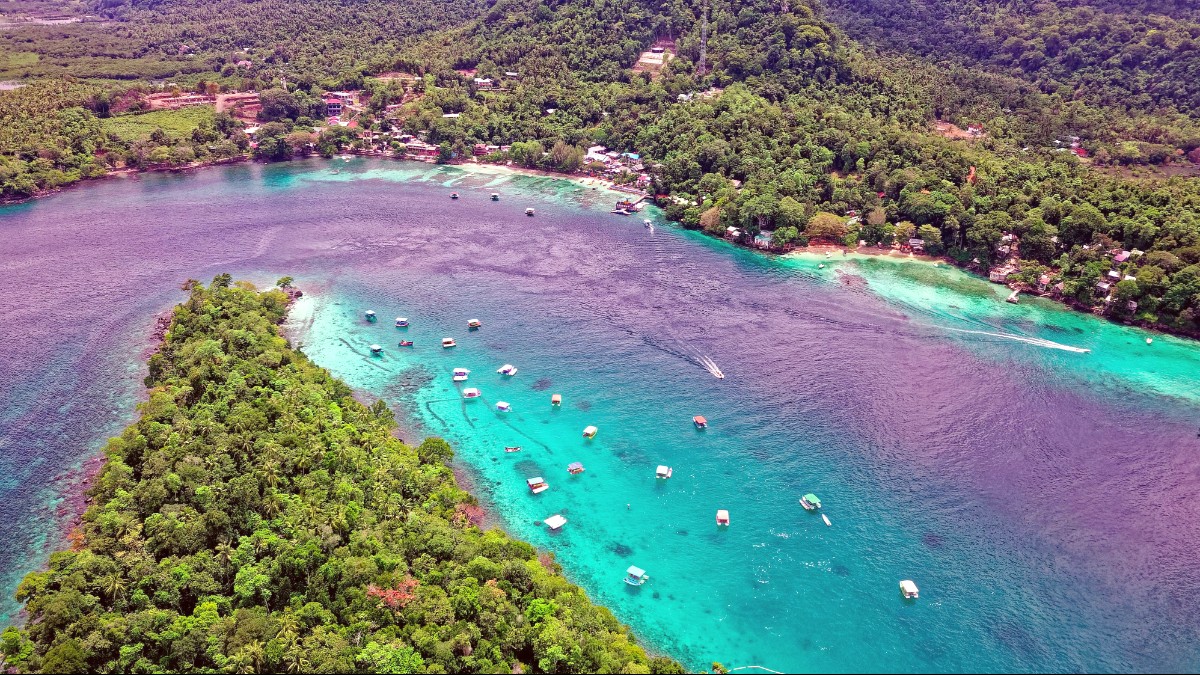
Vanuatu
Prepare for an immersive journey where clear waters meet lush landscapes and ancient customs blend with modern life. This South Pacific gem displays a distinct combination of natural wonders, a wartime past, and a living culture, making it a truly remarkable place to visit.
Espiritu Santo, the largest island in Vanuatu, rests approximately 2,500 kilometers (1,550 miles) northeast of Sydney, Australia, within the South Pacific's Melanesian region. It spans about 3,955 square kilometers (1,527 square miles), supporting diverse ecosystems.
The island includes Mount Tabwemasana, Vanuatu's highest peak (1,879 meters / 6,165 feet), feeding numerous rivers that carve through fertile plains. Its coastline presents rugged sections and pristine white sand beaches, with limestone cliffs in certain areas. Unique blue holes, natural freshwater springs, present remarkable turquoise and sapphire pools. Luganville, the provincial capital, situated on the southeastern coast, functions as the island's main urban hub and port.
The name "Espíritu Santo" (Holy Spirit in Portuguese) came from Pedro Fernandes de Queirós in 1606. This Portuguese explorer, under the Spanish flag, made the first documented European arrival, believing he discovered a great southern continent. This early encounter initiated European influence.
Espiritu Santo served as a major Allied military base, primarily for American forces, from 1942 to 1945. Its strategic position provided a staging point against Japanese forces. This period left tangible relics. The SS President Coolidge, a luxury liner converted to a troopship, tragically sank after hitting friendly mines in 1942. This sunken vessel, one of the world's largest and most accessible wreck dives, shows jeeps, cannons, and personal effects.
At the war's end, the American military disposed of surplus equipment into the sea.
Millions of dollars worth of jeeps, bulldozers, and trucks form an unique underwater landscape.
A popular spot for exploring wartime waste turned marine habitat.
The American presence also influenced local "kastom" and belief systems.
The island’s people maintain strong connections to traditional customs.
Beyond its wartime past, Espiritu Santo is a rich cultural heritage. The island’s Ni-Vanuatu people maintain strong connections to their "kastom" – a broad term covering traditional customs, beliefs, and ways of life.
The cultural identity of Espiritu Santo is evident in daily life and traditional ceremonies. Respect for elders, community solidarity, and adherence to customary laws shape society. Visitors discover cultural experiences through village visits and local markets.
"Kastom" dictates land ownership, ceremonial practices, and social structures. Maintaining traditional practices preserves the unique heritage of the Ni-Vanuatu people.
The combination of mountains, rivers, plains, and a varied coastline means Espiritu Santo is a spectrum of natural environments for exploration, from dense rainforests to calm, sheltered lagoons.
Espiritu Santo presents a concise yet captivating summary of its offerings through its fundamental characteristics. This overview provides a quick guide to what makes the island a distinctive South Pacific destination.
It promises unique experiences for every type of traveler.
Part of Sanma Province, Vanuatu. Approx. 3,955 sq km (1,527 sq miles), Vanuatu's largest island.
Luganville is the capital. Highest point is Mount Tabwemasana (1,879m / 6,165ft).
Vanuatu Vatu (VUV). Official languages: Bislama, English, French.
Espiritu Santo holds several attractions that draw international visitors.